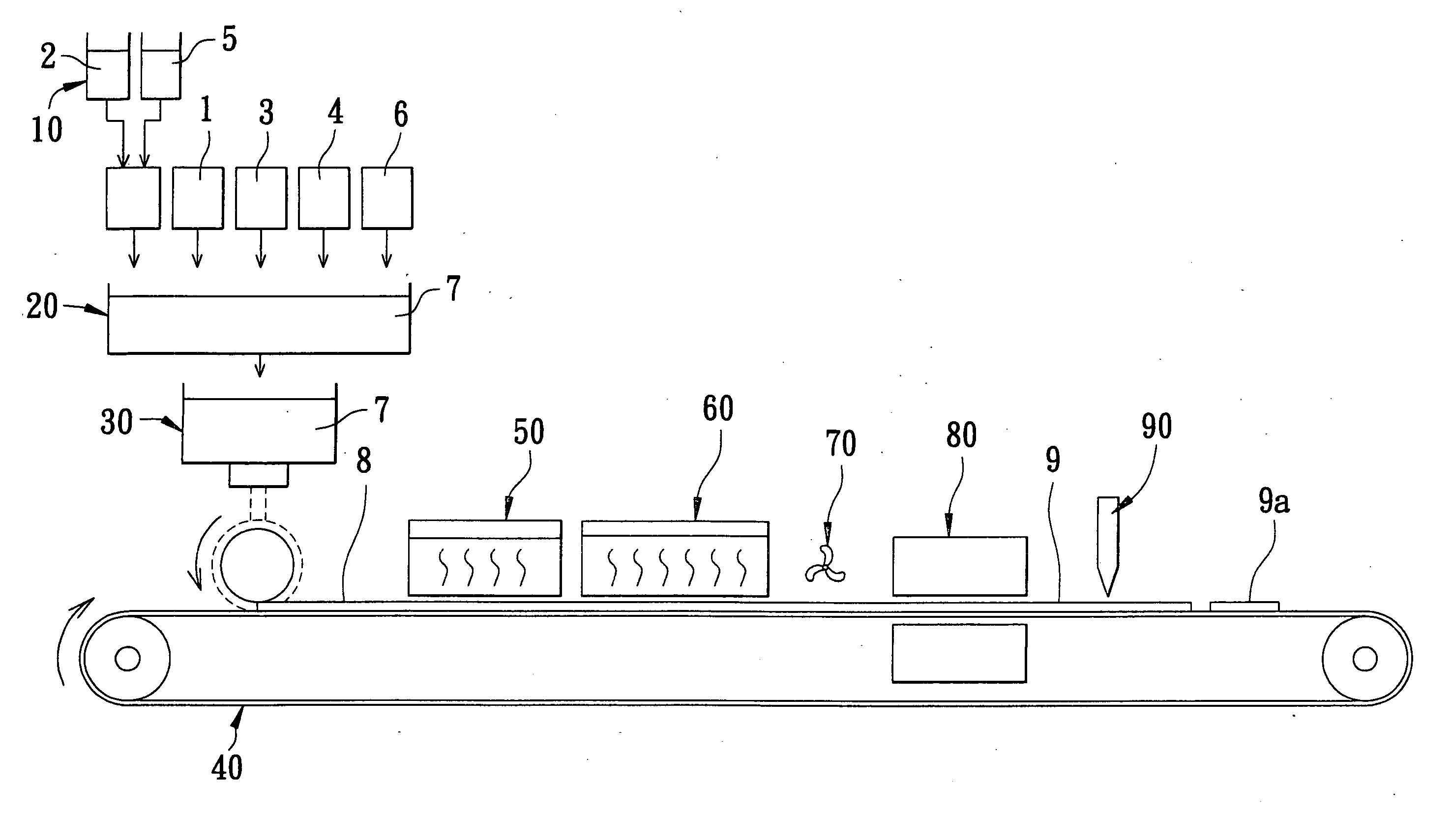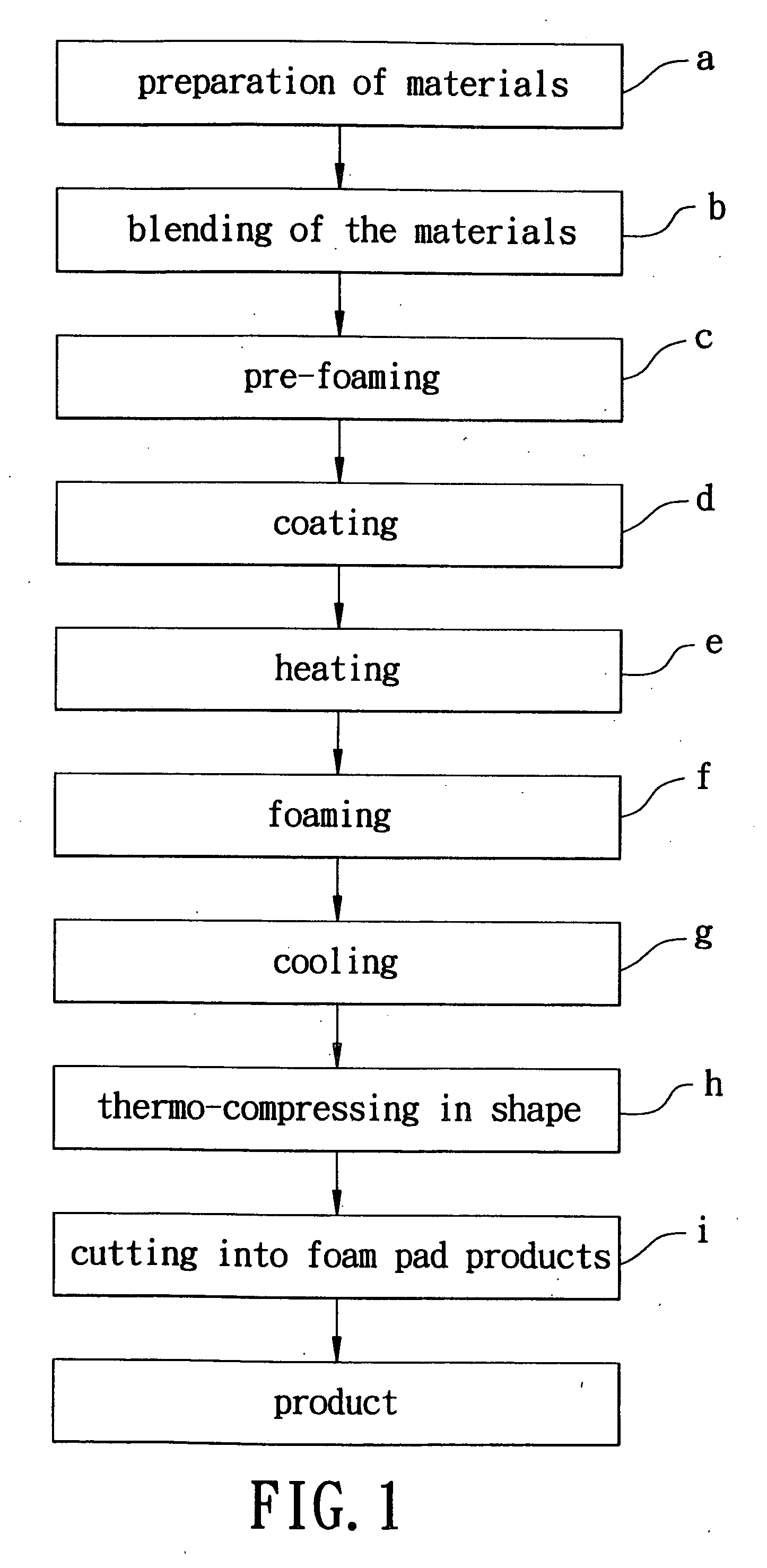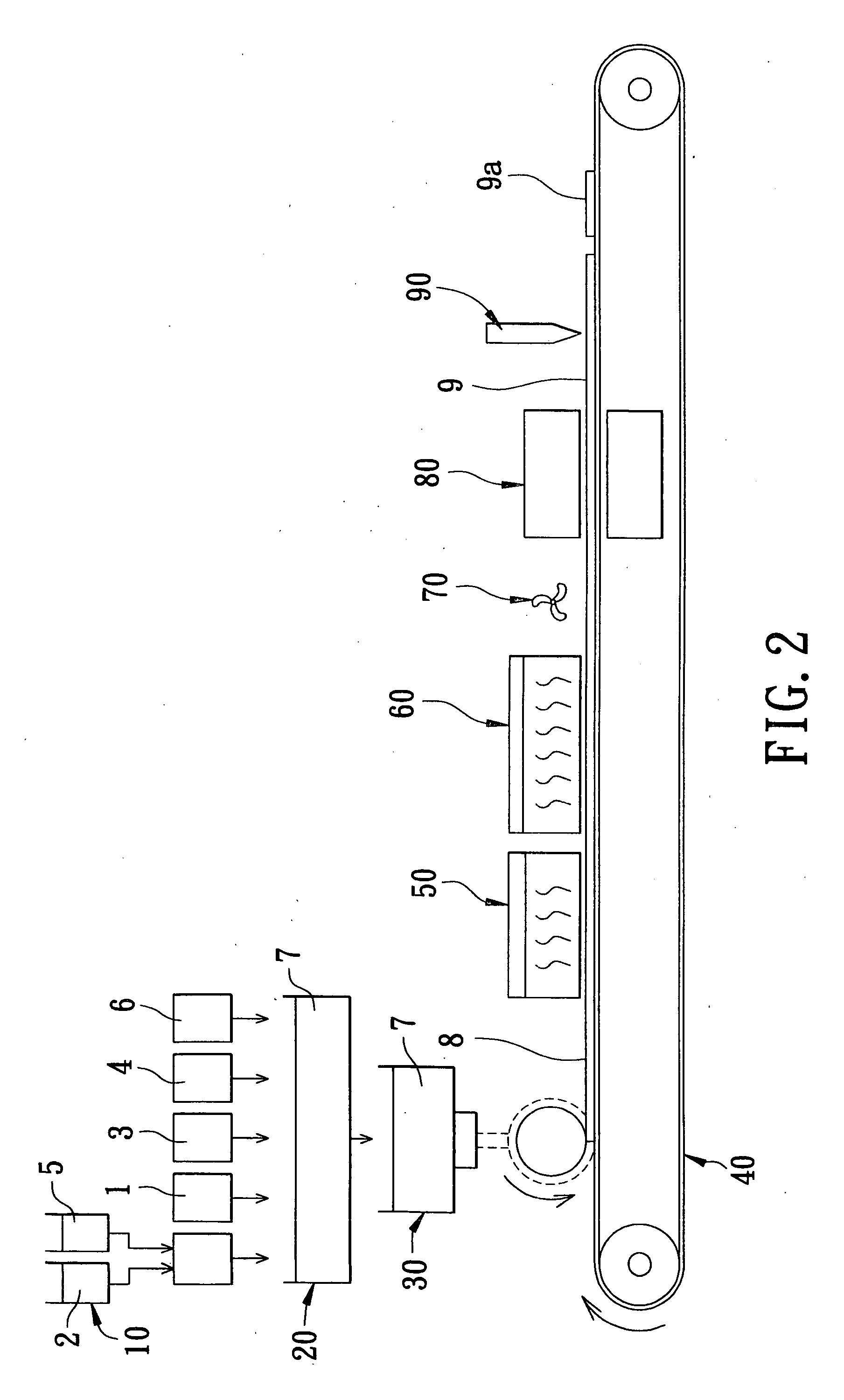Method for manufacturing foam pads
a foam pad and manufacturing method technology, applied in the field of foam pad manufacturing, can solve the problems of user feeling and muscle aching, and achieve the effect of excellent fatigue resistance and user comfor
- Summary
- Abstract
- Description
- Claims
- Application Information
AI Technical Summary
Benefits of technology
Problems solved by technology
Method used
Image
Examples
Embodiment Construction
[0012] A preferred embodiment of a method for manufacturing foam pads in the present invention, as shown in FIGS. 1 and 2, includes the following steps.
[0013] A first step is preparation of materials: Prepare a proper amount of PVC powder 1, DOP curing agent 2, light calcium carbonate 3, kaolin 4, foaming agent 5 and pigment 6 and pour them into a material barrel 10.
[0014] A second step is blending of the materials: the foresaid materials are poured into a blending device 20 to be blended together to form a liquid starchy material 7. Among the materials mentioned above, the foaming agent 5 and the DOP curing agent 2 have to be blended together in advance before they are poured into the blending device 20 to be blended with other materials.
[0015] A third step is pre-forming: the liquid starchy material 7 is conveyed into an intermediate material barrel 30 and kept stationary under normal temperature for about 8 hours in order to let the liquid starchy material 7 produce pre-foamin...
PUM
| Property | Measurement | Unit |
|---|---|---|
| temperature | aaaaa | aaaaa |
| temperature | aaaaa | aaaaa |
| temperature | aaaaa | aaaaa |
Abstract
Description
Claims
Application Information
 Login to View More
Login to View More - R&D
- Intellectual Property
- Life Sciences
- Materials
- Tech Scout
- Unparalleled Data Quality
- Higher Quality Content
- 60% Fewer Hallucinations
Browse by: Latest US Patents, China's latest patents, Technical Efficacy Thesaurus, Application Domain, Technology Topic, Popular Technical Reports.
© 2025 PatSnap. All rights reserved.Legal|Privacy policy|Modern Slavery Act Transparency Statement|Sitemap|About US| Contact US: help@patsnap.com



